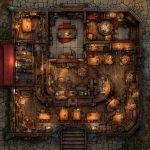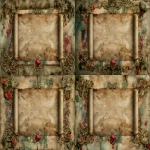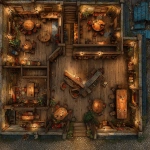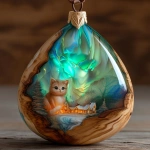Explore the Best AI Image Gallery

The Digital Palette: How IoT in Smart Homes is Transforming the Creative Industry
The Internet of Things (IoT) has permeated every aspect of our lives, from smart appliances to connected cars. Its influence extends far beyond convenience, revolutionizing industries like healthcare, finance, and transportation. One particularly fascinating realm where IoT is making waves is the creative industry.
Smart homes, powered by interconnected devices and sensors, are becoming canvases for innovative artistic expression. Artists, designers, and developers are harnessing the power of IoT to create interactive installations, personalized experiences, and immersive environments that blur the lines between the physical and digital worlds.
Creative Applications in Smart Homes
- Interactive Installations:
- Personalized Experiences:
- Collaborative Creativity:
Imagine a sculpture that reacts to your presence, changing colors or emitting sounds based on your movements. IoT sensors can detect proximity, temperature, and even emotional cues, allowing artists to create dynamic and responsive installations that engage viewers in new ways.
Smart homes can tailor creative experiences to individual preferences. Imagine a music playlist that adapts to your mood, or a virtual art gallery that curates exhibits based on your taste. IoT allows for personalized storytelling and artistic expression, creating unique journeys for each user.
IoT fosters collaboration among artists, designers, and even audiences. Smart homes can become platforms for shared creative projects, where participants contribute ideas, build virtual worlds, or co-create interactive narratives.
Ethical Considerations
As IoT becomes more integrated into our lives, its crucial to consider the ethical implications of its use in the creative industry. Some key concerns include:
- Privacy and Data Security:
- Algorithmic Bias:
- Accessibility and Inclusivity:
Smart homes collect vast amounts of data about user behavior and preferences. Its essential to ensure that this data is protected and used responsibly, respecting user privacy and consent.
AI algorithms used in creative applications can inherit biases present in the training data, potentially leading to discriminatory or unfair outcomes. Its important to address algorithmic bias and promote fairness in creative processes.
IoT-powered creative experiences should be accessible to all, regardless of physical abilities or socioeconomic status. Designers must consider diverse needs and ensure inclusivity in their creations.
Future Trends
The convergence of IoT, artificial intelligence (AI), and augmented reality (AR) is poised to further transform the creative industry. Some exciting trends to watch include:
- Generative AI in Art and Design:
- Personalized AR Experiences:
- Smart Homes as Creative Hubs:
AI algorithms will increasingly be used to generate art, music, and design concepts, pushing the boundaries of creativity and human collaboration.
AR overlays will transform our physical environments into interactive canvases, allowing for personalized creative experiences that blend the real and virtual worlds.
Smart homes will evolve into dynamic spaces where creativity thrives. They will become platforms for collaboration, experimentation, and the production of new forms of art and expression.
The integration of IoT in smart homes is unlocking unprecedented possibilities for the creative industry. By embracing these innovations while addressing ethical considerations, we can foster a future where technology empowers artists, designers, and audiences to explore new frontiers of creativity and imagination.


](https://images.ai-img.art/thumbnails/150/031692dcf8fbf869092e8cea50f9411a45dadc1f189ea67b8dece8e02952a7e3.webp)



](https://images.ai-img.art/thumbnails/150/efd8a9ad06ef2c72e3378698ad5e592d3d2bf8eff85c25e75db7c9902c7be353.webp)




](https://images.ai-img.art/thumbnails/150/7599c9e7507c77a975081d554947c9dea123e678a7ece42d30f571f639620598.webp)
